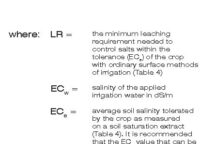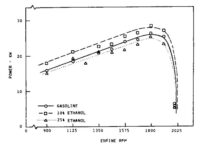- 02, 17, 2016
- Comments Off on Nutrition News – Don’t be fooled by sugar’s sweetness
- By admin
Nutrition News – Don’t be fooled by sugar’s sweetness
The new 2015-2020 Dietary Guidelines have arrived, and while many readers will not study them carefully, there is an important point to bring to your attention: for the first time, they are telling Americans to limit their intake of sugar to 10 percent (or less) of daily calories. What sugar? The sugar guidelines are for […]
Take a Tour- 01, 20, 2016
- Comments Off on Biochar in Colorado – 0.509
- By admin
Biochar in Colorado – 0.509
Updated by Derek Lowstuter (10/24) Quick Facts Introduction Biochar is being researched and used in a variety of applications across Colorado. Its use has the potential to provide benefits to multiple economic sectors, at multiple scales. Biochar applications may have a critical role in mitigating climate change, reclaiming and restoring land, and boosting soil health. […]
Take a Tour- 01, 07, 2016
- Comments Off on Nutrition News – Eight ways to reduce your food footprint this season
- By admin
Nutrition News – Eight ways to reduce your food footprint this season
If you are like most Americans, the last six weeks of the year are filled with family, friends and food. Especially food. Usually more food than we can actually consume, meaning much of it goes to waste. The United Nations Food and Agriculture Organization has identified food waste as a major global problem, estimating that […]
Take a Tour- 12, 21, 2015
- Comments Off on Family Financial Stability
- By admin
Family Financial Stability
Running a household takes financial planning and resources. CSU Extension offers resources to help you and your family with financial stability and future planning. Please visit any of the tabs on this page to access these helpful resources. CSU Extension has identified many resources to help with your finances: Financial Resources America Saves America saves […]
Take a Tour- 09, 25, 2015
- Comments Off on Managing Saline Soils – 0.503
- By admin
Managing Saline Soils – 0.503
Print this fact sheet by G.E. Cardon, J.G. Davis, T.A. Bauder, and R.M. Waskom* (10/14) Quick Facts… Accumulation of salts in irrigated soils is present in most irrigated regions of Colorado. Crop losses may occur with irrigation water containing as little as 700 to 850 mg/L TDS (total dissolved solids) or EC>1.2 dS/m. Salt-affected soils […]
Take a Tour- 09, 25, 2015
- Comments Off on Selecting an Analytical Laboratory – 0.520
- By admin
Selecting an Analytical Laboratory – 0.520
Print this fact sheet by R.M. Waskom, T. Bauder, J.G. Davis and J.R. Self * (11/13) Quick Facts… Yearly sampling of each crop field is recommended to make accurate nutrient management recommendations. Lawn and garden management also can be improved by soil sampling. About a dozen soil cores are adequate for a typical urban lawn […]
Take a Tour- 09, 25, 2015
- Comments Off on Phosphorus Fertilizers for Organic Farming Systems – 0.569
- By admin
Phosphorus Fertilizers for Organic Farming Systems – 0.569
Print this fact sheet by A.L. Elliott, J.G. Davis, R.M. Waskom, J.R. Self and D.K. Christensen* (10/14) Quick Facts… Adequate soil phosphorus (P) is essential for optimal crop yields. Phosphorus tends to move downhill across the field and is less likely to leach vertically into the ground water. On alkaline soils research shows that it […]
Take a Tour- 09, 25, 2015
- Comments Off on Legume Seed Inoculants – 0.305
- By admin
Legume Seed Inoculants – 0.305
Print this fact sheet by B. Erker and M.A. Brick * (9/14) Revised by H. Schwartz** Quick Facts… Legumes convert atmospheric nitrogen to usable ammonia nitrogen for the plant. Inoculation is the process of introducing commercially prepared rhizobia bacteria into the soil. Each legume species requires a specific species of rhizobia to form nodules and […]
Take a Tour- 09, 24, 2015
- Comments Off on Alcohol for Motor Fuels – 5.010
- By admin
Alcohol for Motor Fuels – 5.010
Print this fact sheet by J.L. Smith and J.P. Workman * (11/14) Revised by A. Drenth and P. Cabot** Quick Facts… Alcohols burn more completely then petroleumbased fuels, thus increasing combustion efficiency. Advantages of mixing alcohol with gasoline are that alcohol tends to increase the octane rating and reduce carbon monoxide and other tailpipe emissions. […]
Take a Tour- 09, 24, 2015
- Comments Off on Urea and NPN for Cattle and Sheep – 1.608
- By admin
Urea and NPN for Cattle and Sheep – 1.608
Print this fact sheet by J.C. Whittier* (6/11) Quick Facts… Urea can be fed to ruminants as an economical replacement for a part of the protein in a ration. The amount of urea a ruminant animal can use depends on the digestible energy or total digestible nutrients (TDN) content of the ration. No more than […]
Take a Tour









